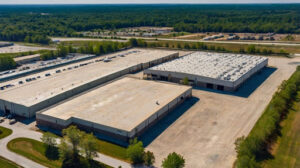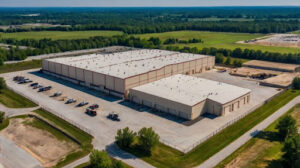What is Real Estate Investment?
Real estate investment involves profitable acquisition, ownership, control, leasing, and disposition of real estate.
Money can be made out of stable income streams from rental properties as well as capital gains ensuing from property appreciation. These are different forms of investment in the real estate industry having varied opportunities and risks associated with each of them; thus whether a pro seasoned or just a beginner then it is crucial to have a comprehensive understanding of basic principles in the field of real estate investor
Definition and Overview
Real estate investment is when you purchase a piece of land or building to generate profits like rents, profits from reselling, and leases.
These include; residential commercial land among others depending on its use purpose. It’s important however that we choose our approaches wisely based on our economic capacities while risking factors.
Economic Impact of Real Estate Investing
Real estate investing facilitates economic development and job creation which is a backbone of the economy; hence a great influence on GDP growth, employment levels, etc., while pushing for construction materials finance, etc.
Again urban renewal through investment in this market sector can uplift property values, as well as improve local infrastructure
Types of Real Estate Investments
There are four primary types of real estate investment: residential, commercial, industrial, and land.
Every asset class provides different chances that need different strategies for maximum turnover. Knowing these categories helps investors in spreading their risk across other asset classes and various investment segments.
Residential Real Estate

Types of Properties
This category includes residential properties, meant to be inhabited by people, tails, and human dwelling purposes; they are also known as housing units – examples range from one-families to large apartment complexes with dozens (if not hundreds) of units inside them all under one roof! Starting new owners like sole purchasers might go single families which usually require cheap entry prices while enjoying singularity about maintaining but their counterparts make much more than anybody else during rentals since there are enough customers hence benefiting a lot due to economies attributed sized structures desiring more tenants than just single-family houses a pair coming over once alone.
Location and Neighborhood Considerations
The value and rental income of a residential property are highly influenced by its location. It’s worth noting that some areas experience high demand among potential buyers/ renters because they have good infrastructure such as schools, parks, mass transit means like trains, buses, etc.
Again when choosing where to own single-family homes think about security levels hoping for an increase in value at a future date taking into account the quality status of schools found nearby as well as safety levels still looking into future town plans before buying it for more profits later on.
Market Conditions and Property Management
Market knowledge is crucial when investing in residential real estate for profitable purposes not just without an idea of what happens here.
It helps people to know about things like changes in demand patterns for housing, rent prices, or house prices over time. Besides, tenants should be screened before they are allowed into a particular building; rent should be collected on time, and houses maintained properly.
This will ensure that there is increased income from the building at the end of the month at any given time when property ownership changes happen since one knows better rather than managing it by him/herself within that specific timespan Hiring a professional property Management Company can boost the rental property returns as well customer satisfaction since they respond quickly due ensuring its wellbeing.
Commercial Real Estate

Types of Properties
This category comprises structures built or even reconstructed for commercial activities such as manufacturing warehouses, retail sales venues offices worksites These buildings are most commonly leased out by their owners for varying periods Also included in this category are hotels, shopping malls, business parks, etc.
It is more profitable but with increased risks and management complexities
Investment Strategies and Risks
The types of investment strategies in commercial real estate change according to the situation of the property market.
Common strategies include; acquiring undervalued properties that can be redeveloped and then sold at higher prices than they were bought, going for long-term leases that target tenants who are looking for stable housing arrangements, and putting up new structures. On the other hand, rent fluctuation may lead to loss of income during economic downturns in addition to other factors such as tenant turnover and increased supply. It is recommended that one avoids these situations by establishing an inventory comprising various assets which also includes conducting more research collecting rent, in local markets.
Tenant Diversification and Lease Structures
Income loss from vacant space can be minimized through the diversification of tenants. For instance, renting out premises to eateries, boutiques, and beauty salons at a shopping mall may serve as a source of regular income even when one party relocates.
Lease structures that involve escalation clauses for long periods could also boost stability by guaranteeing regular increments in rent received over time.
Location and Market Demand
Location and demand from the public to a large extent determine the success of any commercial real estate investment.
Properties situated within bustling areas experiencing strong economic growth and with high commercial space requirements tend to provide better returns. Local population changes within towns assist in pointing out good investment prospects avoiding areas experiencing population decline.
Industrial Real Estate

Types of Properties
Our third category of industrial real assets includes; factories, warehouses, and distribution centers among others. Factories, warehouses, and distribution centers among others are examples of industrial real assets.
Our warehouses therefore make up most of the rented ones among our industrial and commercial properties, so the logistic facility is another example that talks about industrial estate. The advantage of this kind of property is that; it often has huge ceilings with modern facilities for loading goods into lorries as well as unloading them. Its price can also be improved by putting up five or more units of structures on it or increasing area allocation for such structures. Estate owners should know about requirements specific to different potential industrial tenants.
Investment Considerations
There are many factors that one should consider before investing in industrial real estate such as property size, layout, and condition.
Large, modern warehouses with high ceilings and advanced loading facilities are often in high demand. Additionally, the potential for property expansion or redevelopment can increase its value. Understanding the specific needs of industrial tenants can help tailor properties to attract and retain tenants.
Location and Accessibility
The location of industrial properties is essential in attracting tenants because it is crucial. Proximity to major transportation routes and good access for large vehicles are critical. This means shorter delivery times for properties near urban centers while rural ones provide cost advantages.
Evaluating traffic patterns, infrastructure facilities, and future development plans helps pinpoint prime locations for investment in the industry.
Size and Plan description of the property
The functionality and attractiveness of industrial properties to tenants are significantly influenced by their size and layout.
Here are some important features that should be considered; wide loading docks, high ceilings, flexible floor plans such as this one that can be used for several types of industrial activities which may exist; ample parking space necessary for both trucks and employees at all times it is filled. Specialized building designs meet different sector needs thereby increasing demand in the market.
Environmental Rules
Several environmental policies could affect how industries run and make profits from their assets. Concerns on pollution management like disposals for example wastes; emissions; and handling hazardous substances could among others require being taken into account.
To avoid penalties, compliance with laws on the environment at the country level has to be upheld by any firm. Early determinants about any shortcomings related to possible investments are very critical before an investor settles for land in the industry sector.
Land Investment

Land Investments Types
Land investments mean purchasing undeveloped or virgin lands awaiting a future sale or development project. Different forms of these include residential lots, commercial plots, fertile soils used for agriculture purposes as well as bare lands not having any kind of use at all.
Happy returns might be realized in case this area is well cultivated though it is among the most risky speculations that an individual can engage in.
Considerations in Investment
Location, zoning laws, and future development potential are some of the things to look at when purchasing land as an investment. There is a substantial increase in the value of lands situated in areas with high growth potentials or places where there will be infrastructural projects carried out soon.
Furthermore, investing in undeveloped properties takes time before one sees any profits through them if at all because they might just remain like everyday nothing. It is necessary to do extensive research and have a lifelong mindset about investment while making such decisions.
Land zonation
This is a very important factor to be considered in the choice of an investment. Land near cities, main roads, or places where infrastructure development is taking place tends to appreciate very quickly. Wild and scenic lands attract developers who may purchase them for development thus boosting their monetary value in addition to various restrictions imposed by wildlife conservation bodies.
Local market trends are a blueprint for potential land investments while analyzing demographic data can help an investor decide where to put his/her money upfront concerning pieces of property that will sell best for him/her later.
Building Zoning and Land arrangements
Zoning laws and formal land use limitations can severely limit the utilization options available to a land venture. Residential, commercial, industrial, or agricultural are the various purposes that these rules determine whether any given piece of real estate will be fit for use.
It is vital to know the local zoning code and its anticipated alterations so that someone knows how best to develop his piece without any trouble at all concerning whatever stands him against such a background. Moreover; building height limits as well as density restrictions also come under consideration given all peculiarities like environmental protection measures just like in our case now too
Environment
Quality of soil answering to topography plus climatic conditions are some environmental factors that affect land suitability for construction use. Especially land with poor drainage or prone to flooding may need expensive mitigation measures before envisaging construction works.
It should be noted that most protected areas have prohibited any development while ensuring the ones left are homes for endangered species. An investor who wants to succeed in land investment should therefore carry out an environmental impact assessment so that he becomes well-informed on such matters.
Alternative Real Estate Investments

Real Estate Investment Trusts (REITs)
Investors can buy shares in large-scale real estate investment portfolios through Real Estate Investment Trusts (REITs) and get exposure to the sector without actually owning a property. These trusts invest in different types of properties such as residential, industrial, or commercial buildings among others. Public stock markets are used by REITs to offer liquidity through trading while still providing revenue from renting property and gaining value over time
Advantages versus Risks of REITs
These trusts offer diversification, liquidity as well as professional management among other benefits they come with.
This means that someone who opts for such investments spreads out risks greatly since he/she will be investing in various places via this method rather than concentrating on one place only at times when such an approach might not work out for them at all
Investment strategies
In investing in REITs one can consider specific sectors like residential areas only; some people are interested in commercial offices others want industrial and residential real estate investments. While several breeds prefer reits with great dividends, a good number of factors including; the underlying market conditions should guide any given investment strategy and an investor would have to ensure that it maximizes his own desired outcomes for him from light decisions alongside his research base on it.
Real estate crowdfunding
Real estate crowdfunding allows individual investors to pool resources together into larger real estate projects. This can include building houses, renovating homes, office buildings, or shopping malls.
Many emerging lending and crowdfunding platforms help in the management of these undertakings by private individuals, which were initially not possible only to the corporate world which includes those to some extent who can be high net worth.
Other alternative options
These other alternative investments in real estate entail private real estate funds mortgage notes, and real estate partnerships. On the sunny side of it, these channels open up such firms to various aspects of market opportunities within the sector while offering them chances that are rarely available anywhere else.
Unfortunately, they also need a higher starting point than others because apart from being more complicated there exists such factors as risk realization at the proximity of hazards which may call for caution.
Choosing the Right Real Estate Investment

Factors to Consider
Selecting the right real estate investments involves considering personal financial goals, risk tolerance, and horizon for holding investments made in such assets. The different types of real estate investments come with different levels of risk and returns. In the case of residential real estate investors and rental properties like housing units; there exist some that generate stable rental incomes whereas there are others such as office spaces which provide high revenue streams but are equally risky.
Risk Tolerance and Financial Goals
Before you consider investing in real estate, you have to understand what kind of risks you are willing and able to take on board. For anyone interested in low-risk assets for example residential property or real estate investment trusts (REITs) could be worth checking out. However, if you desire more risk with higher rewards then investing in commercial or industrial residential real estate investors might just be what appeals most to you at this moment. Aligning financial ambition towards a more balanced approach
towards investing would assist someone like this in succeeding as far as real estate agent property portfolio management is concerned.
Market Conditions and Economic Outlook
By analyzing market conditions and the economic situation, it is possible to detect the best real estate investment opportunities. Demand for different kinds of properties is influenced by things like population growth, unemployment rates, and general economic trends. Market knowledge could help you make timely and best real estate investments.
Final Thoughts on Real Estate Investments
A good way of accumulating assets and sources of revenue is through real estate investment. One should have an understanding of what makes each type unique to make informed choices between residential, commercial, or even industrial properties since land is included here too. Thus, by considering factors such as location, and state of the markets among others, one can have an idea about investing in multiple portfolios to generate income through diversified investments in real estate properties.





























